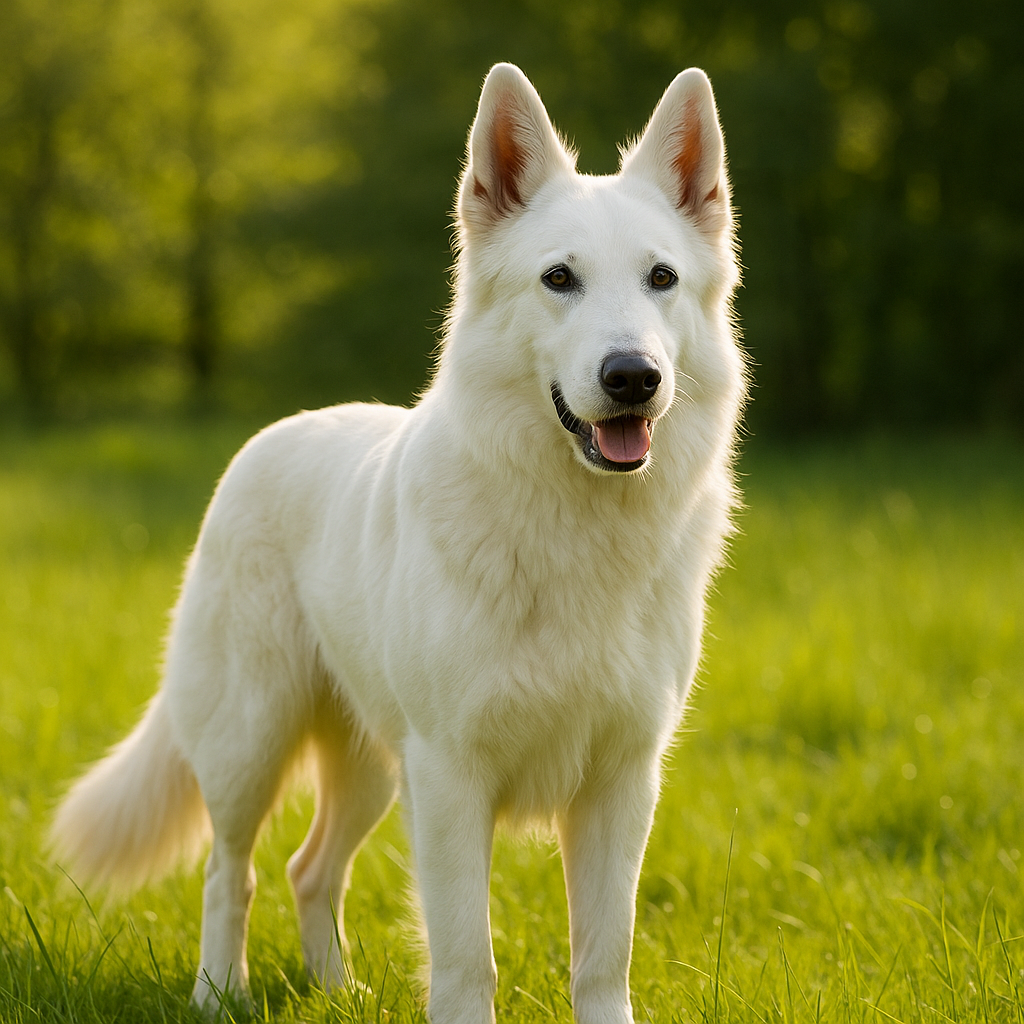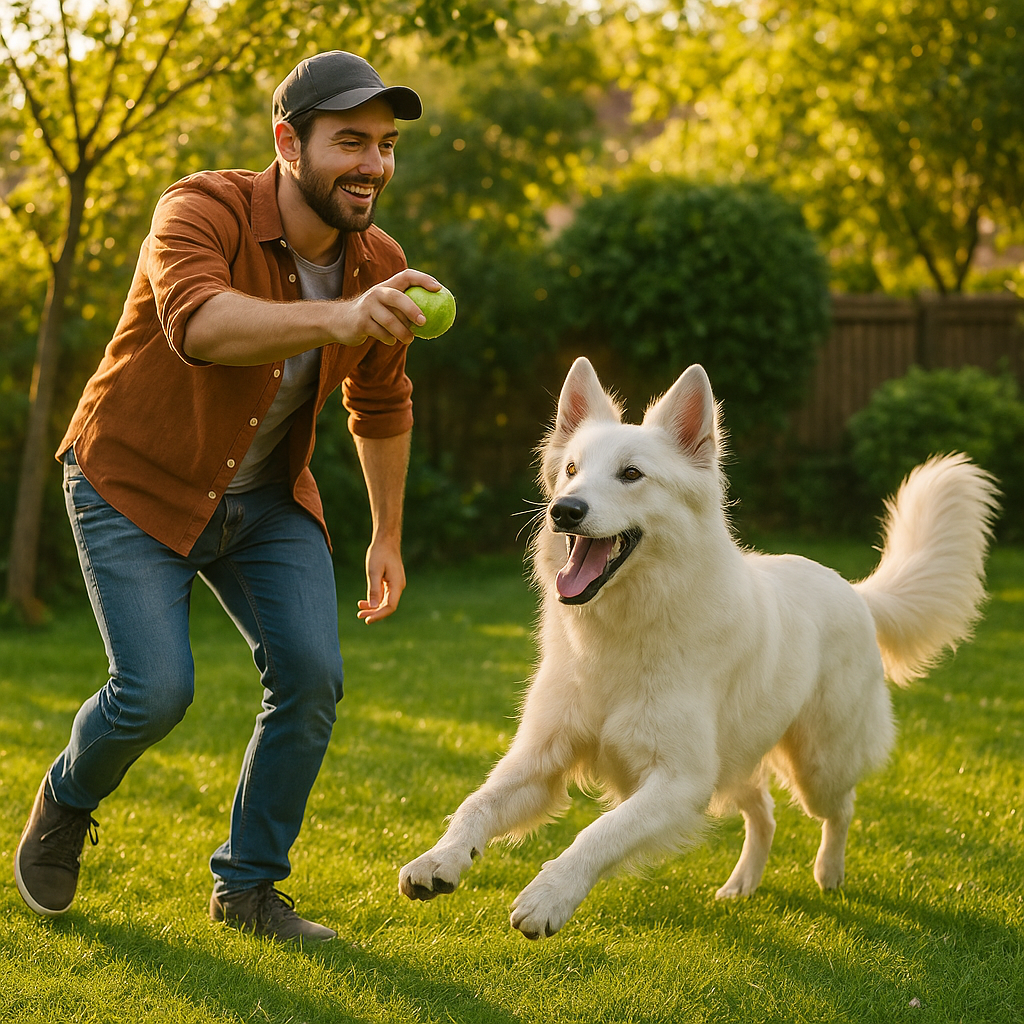| Key Points | Details to Remember |
|---|---|
| 🐕 Breed Traits | Loyalty and intelligence at the core |
| 🏞️ Daily Routine | Exercise and stimulation keep them happy |
| 🎓 Training | Consistency and positive reinforcement |
| 🩺 Health Care | Regular vet visits and balanced diet |
| 🤝 Bonding | Playtime and communication strengthen ties |
| 😊 Owner Satisfaction | Joy and fulfillment in daily companionship |
Swiss Shepherds combine striking white coats with a warm temperament and boundless energy. In this portrait, an owner shares how daily walks, thoughtful training, and genuine affection have turned their shepherd into a living symbol of devotion.
Origins and Temperament of the Swiss Shepherd
Swiss Shepherds descended from White Swiss Shepherd Dogs and carry a heritage of herding and working alongside humans. That history shapes their trainability and eagerness to please.
Historical Background
In the early 20th century, farmers in Switzerland selectively bred white-coated variants of German Shepherds for herding duties. The result was a dog both elegant and robust, prized for its calm working drive. Post–World War II, enthusiasts formalized the breed’s standards, emphasizing the white coat and gentle nature.
Core Temperament Traits
Owners note an immediate warmth when meeting a Swiss Shepherd. This breed strikes a balance between alertness—ideal for guarding—and sociability with family members. They often display a playful streak, turning every yard into an adventure ground, yet remain observant and patient with children.

Daily Life with a Swiss Shepherd
Keeping a Swiss Shepherd fulfilled means combining physical exercise with mental challenges. A structured routine brings out the best in their eager minds.
Exercise Requirements
- Morning jogs or hikes lasting 30–60 minutes.
- Afternoon games—fetch, scent trails or agility drills.
- Social park visits for canine interaction.
Our owner describes weekend mountain walks as “transformative”—the dog returns content, muscles well-toned, and mind refreshed.
Nutrition and Feeding Schedule
Quality protein sources—chicken, lamb, or fish—keep muscle mass strong. The following table outlines a sample feeding plan:
| Meal | Portion | Notes |
|---|---|---|
| Breakfast | 2 cups of dry kibble | Rich in protein, low grain |
| Lunch (optional) | ½ cup wet food | Hydration boost |
| Dinner | 2 cups of dry kibble + veggies | Balanced with fiber |
Training and Socialization Strategies
Early, consistent training sculpts a Swiss Shepherd’s instincts into reliable behaviors. Positive methods deepen trust.
Puppy Socialization
- Introductions to varied environments from 8 weeks onward.
- Gentle handling and exposure to household noises.
- Short playdates with vaccinated dogs.
Such steps prevent timidity and foster a confident adult dog eager for new experiences.
Essential Training Tips
Use treats sparingly; switch to praise and tactile rewards once commands are learned. Key commands like “sit,” “stay,” and “leave it” become natural with five-minute sessions—twice daily.
“Consistency wins over volume of commands,” advises our owner, who balanced firm guidance with playful breaks.
Health, Grooming, and Lifespan
Swiss Shepherds generally live 12–14 years, provided they receive attentive care. Monitoring common issues ensures long-term well-being.
Regular Veterinary Checks
- Annual hip and elbow screenings for dysplasia.
- Dental cleaning to avoid tartar buildup.
- Vaccination and parasite prevention schedules.
Grooming Routine
Their double coat sheds seasonally. Weekly brushing reduces hair around the house, while daily combing during spring and autumn tackles dead undercoat. Baths every three months keep skin healthy without stripping natural oils.

Deepening the Human–Canine Bond
Moments of quiet companionship often leave the deepest impressions. Whether through scent work or shared strolls, each owner crafts unique memories.
Enrichment Activities
Food-dispensing toys transform meal times into puzzles, sharpening problem-solving skills. Swimming sessions, when weather permits, provide low-impact exercise that joints appreciate.
Communication Cues
- Soft vocal tones signal approval; firm “no” halts unwanted behaviors.
- Hand signals reinforce spoken commands, especially in noisy settings.
- Eye contact builds trust—rewarding the slightest glance strengthens recall.
“Essentials to Remember”
- Swiss Shepherds thrive on consistent routines blending exercise and rest.
- Positive, short training sessions yield better compliance.
- Regular health checks and targeted grooming promote longevity.
- Play and enrichment maintain mental sharpness.
FAQ
- What makes Swiss Shepherds different from White German Shepherds?
- Although they share ancestry, Swiss Shepherds are bred for a gentler temperament and stricter white-coat standard, favoring companion over working roles.
- How much daily exercise does a Swiss Shepherd need?
- At least 60–90 minutes of varied activity—jogs, play sessions, mental puzzles—to prevent boredom.
- Are they good family dogs?
- Yes; their patient nature and protective instincts make them ideal with children and seniors.
- How do you handle seasonal shedding?
- Increase brushing to daily during heavy-shed periods and use undercoat rakes to remove loose hair.
- Do Swiss Shepherds adapt to apartment living?
- They tolerate it if exercise needs are met, but a yard or regular outings are strongly recommended.










